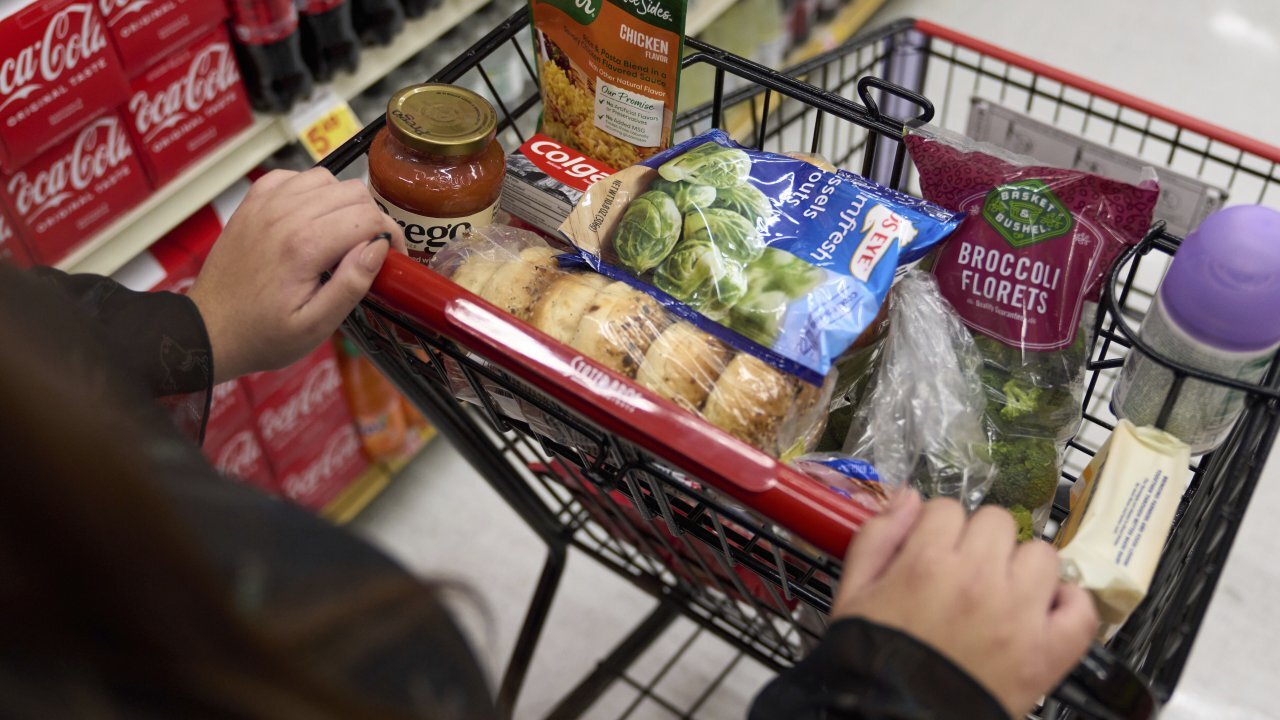It's no secret our paychecks are buying less, and coming into an election year, the economy is likely to be a deciding issue for many voters. So, what is driving inflation in the United States?
The short answer: A lot of things.
From a tight labor market at home to conflict overseas, economic ripple effects from the pandemic are all still alive and well.
While the inflation rate so far this year is hovering around 3% — below what many economists consider a high rate — it's above the Federal Reserve's target of 2%. Combined with rate hikes beginning in 2021 and inflation reaching a four-decade high in 2022, Americans have felt about a 20% increase over the last four years.
It's what most of us are feeling when we go to the grocery store, pay our electricity bill or replace an appliance. It's also why when we hear that inflation has slowed, it doesn't feel like it.

Money
Americans struggling to afford groceries due to increasing prices
The Bureau of Labor Statistics releases the Consumer Price Index report monthly. That report is largely how we gauge the inflation rate looking at year-over-year price comparisons for almost everything we spend money on.
So far this year, the categories driving inflation were housing, car insurance and health care. But to get a true sense of what has been driving inflation overall — not just month to month — you have to take a step back and look at longer-term trends in context.
One major influence on inflation is a tight labor market. The unemployment level is low.
Additionally, there are a lot of open jobs. This, combined with the workers searching for better opportunities while on the job, means companies are offering higher wages to compete for talent.
According to an analysis by the Center for American Progress, nearly 60% of workers have seen pay increases. Those costs got pushed down the line to consumers.
The Associated Press reported that pay for private-sector workers increased by 4.1% in 2023, outpacing inflation. However, those increases paled in comparison to the 12.6% average increase in CEO salaries.
Some minimum-wage workers saw increases, too, but not enough to impact inflation rates. A study from the Economic Policy Institute found that minimum wage increases, even if instituted in every state, would have a negligible impact on inflation — meaning the share of workers in this category is too small to drive up prices.

Housing
Why are rent and housing prices still so high?
Another factor that affects inflation is strong demand for durable goods like appliances and cars meeting with supply chain issues at the start of the pandemic. Consumer demands shifted, nearly overnight, from services to goods. We were buying more stuff and going out less.
After lockdowns were lifted, this dynamic abruptly shifted again, and some supply chain issues were resolved. Now we're seeing the prices of durable goods going down and services going up.
Today, new supply chain issues have been mounting. Some of those include the drought in the Panama Canal, the collapse of the key bridge in Baltimore, and attacks on commercial vessels in the Red Sea.
Another conflict impacting inflation: Russia's war in Ukraine.
The price of food and energy went up in the U.S. and abroad as both countries' outputs dropped, due in part to sanctions on Russia that triggered inflationary rates in many countries.
However, there is some good news: Consumer inflation is trending downward.
While we aren't likely to see prices drop to pre-pandemic levels, at least they are projected to keep spiking at the same rate.




